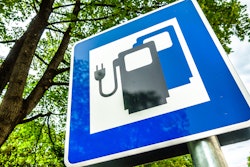The messaging is that all trucks are long haul, and long haul means a lot of miles per day, right?
Let’s unpack a claim that seems to be the foundational argument for why emerging technologies are not going to be there in time to support regulatory changes.
Let’s quote the freight industry’s favorite data source: the American Transportation Research Institute (ATRI). The June 2024 ATRI annual cost of trucking report summarizes daily mileage trends in their Table 3 showing that more than 50% of trip lengths are under 500 miles. This is not miles per day, this is miles per trip.
ATRI also summarizes miles per day in 2023 in their Figure 3 as follows: 46% were under 300 per day, 64% were under 400 per day, and 79% were under 500 miles per day.
J. B. Hunt reported their own operations in 2016 in 660 Minutes: How Improving Driver Efficiency Increases Capacity. They reported that drivers might get 7.3 hours of actual road time in a shift. If average speeds, optimistically, are 60 mph, that translates to at most 438 miles per driver day.
ATRI also reports dwell time by freight type in their Figure 18 in their recent report indicating each stop for dry freight van averages 1.49 hours, and reefers stop for 2.52 hours.
ATRI also reported that deadheading went up in 2023 to 16.3% in non-tank operations. Small fleets are reported to still see 10% deadheading.
FTR reports on Active Truck Utilizations, which is very dependent on market conditions. FTR’s most recent data shows utilizations less than 90% for 2023 and starting to inch back up. That means 10% of trucks in 2023 were not moving — essentially parked, each day. Doesn’t really matter what technology is on the truck if it’s not moving.
All this industry-certified data begs the question, why is the assumption always made that all semi-trucks operate in long-haul service? Why are there lawsuits debating that emerging technologies are insufficient for long haul as if short hauls are not the majority of daily operations?
ATRI's oft cited report, Charging Infrastructure Challenges for the U.S. Electric Vehicle Fleet concluded that electric trucks were not viable because on average they needed battery packs that were 909 kWh for day cabs and 1,622 kWh for sleeper cabs. Those numbers convert to once-a-day charge ranges of 378 day cab miles and 675 miles for sleeper cabs. How many real world trucks does that conclusion represent?
I know drivers who get 600 mile per day. Some of them return to base, what NACFE terms long-haul return to base. Others roam, what NACFE terms long-haul irregular routes. I’ve met team drivers who do more miles per day hot shotting. I know there are fleets that can’t predict tomorrow’s load, and it may be 300 miles or 800 miles. I know there are drayage operations running double shifts, five days a week and racking up 600 miles per day. Certainly, truly long haul loads are out there.
But, aren’t there a significant number of shorter hauls as well?
The ATRI data says there are.
How does that point get lost in all the arguments about future technology adoption timelines?
I’ve found words need definitions.
NACFE found a number of different interpretations of “regional haul” in the report More Regional Haul. I recently was in a Fleet Electrification Coalition panel discussion were Scania engineers documented a European long-haul demonstration trip where battery electric vehicles went from Sweden to Italy. Their idea of “long” meant less than 400 miles per day. I’ve written about “long” in Great Britain, where the entire country could fit three times into the size of the state of Texas. I’ve also seen long haul in Australia, where distances can be extreme by any definition.
It seems, before arguing about the feasibility of long-haul technology, we should probably agree on a definition of long.














